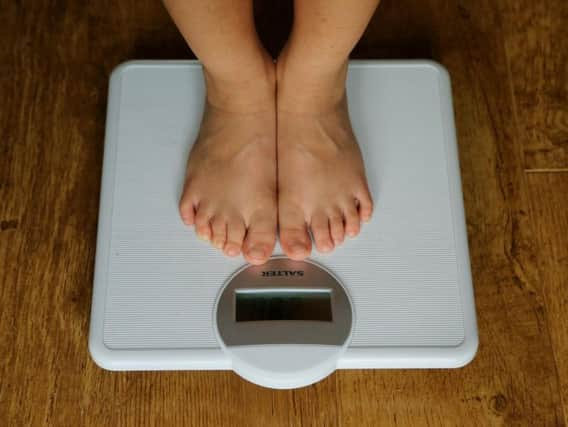One in four Blackpool children obese by the time they leave primary school


Sugary drinks and junk food are to blame for the resort’s youngsters piling on the pounds, says the Obesity Health Alliance campaign group.
Advertisement
Hide AdAdvertisement
Hide AdThis was up on the 16 per cent considered obese in 2006/07, the earliest year with available data.
Additionally, 15 per cent of Year 6 children were overweight last year, higher than 12 per cent in 2006/07.
This means 40 per cent of the town’s pupils in the last year of primary school were unhealthily overweight.
And six per cent were considered severely obese, with a body mass index (BMI) in the top one-in-250 for children.
Advertisement
Hide AdAdvertisement
Hide AdNationally, in 2018/19, four per cent of 10 and 11-year-olds were classed as severely obese - a record high for the fourth consecutive year. The obesity rate, which includes severe obesity, was 20 per cent.
Caroline Cerny, of the Obesity Health Alliance, said children are growing up in an environment that is ‘flooded’ with unhealthy food and drinks, which are damaging their health.
She said: “It’s time for the Government to bring in the measures that we know will stem the tide of unhealthy food marketing and promotions, starting with the long overdue 9pm watershed on junk food adverts on TV and online.”
Dr Arif Rajpura, Blackpool Council Director of Public Health, said: “Childhood obesity has been described as one of the most serious Public Health challenges in the 21st Century with obesity disproportionately affecting children living in deprived areas and some ethnic minority groups.
Advertisement
Hide AdAdvertisement
Hide Ad“It has been recognised as a complex problem by the UK’s Government with multiple causes. The Government’s ambition is to halve childhood obesity by 2030 in England, and have laid down some important foundations for change with two Chapters of a National childhood obesity plan, a prevention green paper; Advancing our health; prevention in the 2020s, and the NHS Long Term Plan.
“Excess weight has slowly crept up on us, and is now accepted as normal. However, it is a matter of health and not how our children look. We hear too often discussions about weight as stigmatising and laying the blame at individuals, but we need to recognise the changes in our living environment which are shaping behaviours, and making it harder for us to make healthy choices.
“Physical activity is important but will not solve obesity on its own. As a society we are drowning in a flood of unhealthy food and drink options including super-sized portions which exceed daily calorie intake. Our children are constantly exposed to advertising of unhealthy food and drink and utilised cartoon characters to market these items and make them appear attractive.
Healthy food and drink is often perceived as unaffordable, whilst the unhealthy options are cheap.
Advertisement
Hide AdAdvertisement
Hide Ad“In January 2016 the council made a commitment to promote healthy weight and improve the health and well-being of the local population by signing a Local Declaration on Healthy Weight. The aim of the declaration is for the council to demonstrate a commitment to reduce unhealthy weight in the community, protect the health and wellbeing of staff and the local population and to make an economic impact on health and social care of the local economy. The declaration was developed in partnership with Food Active and other Directors of Public Health across the North West of England.
“Since the signing of this declaration the Public Health Team have been working in partnership with a range of organisations to drive the healthy weight agenda forward.
“As well as our own work, we will continue to lobby the Government to do more to reduce the lure of food and drinks laden with sugar, and to crack down on some of the inappropriate marketing of unhealthy foods that we see everywhere we turn.”
Public Health England works out obesity using the 1990 British growth reference chart, a large collection of statistics used to determine a child’s BMI. It defines a child as obese if their BMI is in the chart’s top five per cent, and overweight if they are in the top 15 per cent.
Advertisement
Hide AdAdvertisement
Hide AdNHS chief executive Simon Stevens said obesity is a ‘dangerous public health threat’ for children.
“While the NHS will be there for patients, services and budgets will obviously be placed under more strain,” he said. “So we also need combined action from parents, businesses and government to safeguard our children from this preventable harm.”
Obesity increases a person’s risk of developing serious and sometimes life-threatening health problems, including heart disease, type 2 diabetes, some types of cancer including breast and bowel cancer, and stroke, according to the NHS. In 2018, the Government announced new measures to half childhood obesity by 2030. These included proposals to prevent parents giving in to temptation by stopping shops from displaying junk food at checkouts.